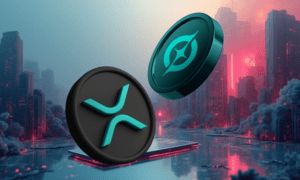When it comes to SEO, everyone is obsessed with backlinks — but few realize the secret weapon sitting right inside their own website: internal linking.
Internal linking isn’t just about connecting random blog posts.
Done right, it’s a powerful way to improve SEO rankings, boost user engagement, and turn your site into a tightly connected authority hub.
Today, I’m breaking down the Top 5 reasons you should start building smarter internal links — right now.
Internal Links Help Google Discover and Index Your Pages Faster
Google’s bots are like little spiders crawling your site. Internal links are the ropes that help them move quickly from page to page.
When you strategically link your content together, it helps Google:
- Find new posts faster.
- Understand the structure of your site.
- Prioritize which pages matter most.
Example:
In my breakdown on how to do audience research that actually works, I show how connecting related content helps Google understand topical authority even before you earn external backlinks.
Pro Tip:
Make sure your most important posts aren’t buried three clicks deep. Link to them often from other high-traffic pages!
Internal Linking Builds Topical Authority
Modern SEO isn’t about stuffing keywords — it’s about building topical authority.
Internal links help you create content clusters around specific themes, signaling to Google that you’re an expert in your niche.
For instance, in my step-by-step guide to refreshing old content for SEO gains, I explain how updating old posts and connecting them to newer posts strengthens your overall site authority — making every post rank better.
Think of it like building a city:
- Your main posts = skyscrapers.
- Your supporting posts = roads and bridges.
No roads = ghost town.
Strong internal links = thriving metropolis.
Internal Links Distribute Page Authority (Link Juice)
You work hard to earn backlinks. But if you don’t distribute that “link juice” internally, you’re wasting massive SEO power.
Internal links allow your high-authority pages to pass some of that power to newer or weaker pages, helping them rank faster.
Real Example:
In my article about organic traffic generation hacks they don’t want you to know, I showed how linking strategic pages together boosted not only my homepage authority — but also tripled the visibility of new blog posts within 90 days.
Pro Tip:
Whenever you publish a new post, immediately link it from at least two or three older, higher-authority posts.
Internal Linking Improves User Experience and Dwell Time
SEO isn’t just about bots — it’s about people.
When you insert smart internal links, you naturally guide your readers to more helpful, relevant content.
The result?
- Longer time spent on your site.
- Lower bounce rates.
- Higher conversion opportunities.
For example, someone reading about audience research might naturally want to learn about how refreshing outdated blog content can skyrocket traffic.
That’s a natural bridge — not a hard sell.
Bottom line:
The longer people stay on your site, the better Google ranks you. Period.
Internal Links Future-Proof Your SEO
Google’s algorithms will keep evolving. But one thing remains constant:
Sites that are well-structured, relevant, and interconnected win.
Smart internal linking future-proofs your SEO efforts because it creates:
- Strong semantic relationships between your pages.
- Easier paths for crawling and indexing.
- More opportunities for ranking across related keywords.
And guess what? You control internal links 100% — unlike backlinks, which you have to earn or negotiate.
In my experience, building strong internal connections between posts like audience research, content refreshing, and organic traffic growth helped me dominate several related keywords at once — even without hundreds of external backlinks.
Final Thoughts: Build Your Web, Not Just Your Posts
If you’re just tossing blog posts into the void without linking them together, you’re leaving massive SEO gains on the table.
Start small:
Every time you publish, link back to at least two relevant older posts — and update old posts to link to the new ones.
Consistency builds power.
The web favors websites that act like webs — interconnected, useful, and easy to navigate.
So don’t just write posts. Build your empire — one internal link at a time.
Christopher Robinson is a content strategist and SEO enthusiast who specializes in helping businesses grow their organic traffic through smart, sustainable strategies. When not building web empires, he enjoys sharing no-fluff guides on topics like audience research, refreshing old content for SEO gains, and internal linking strategies.
Learn more about boosting your search traffic and building authority at www.seopowerhouse.com.au



































